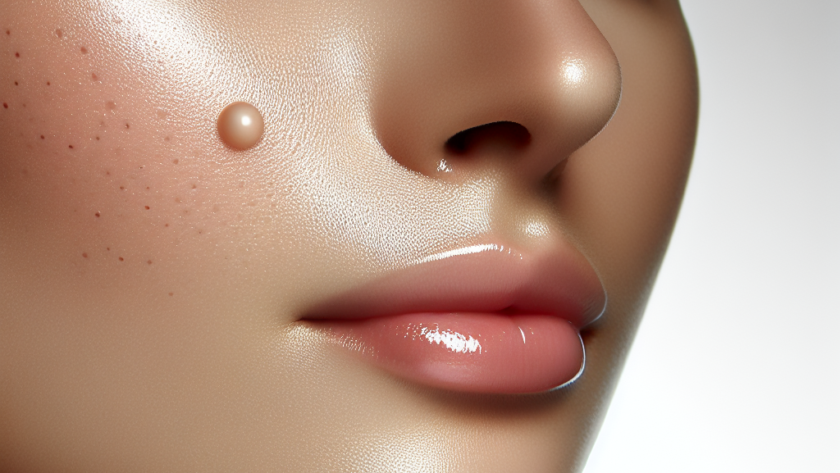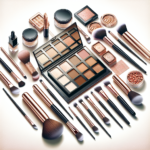Blackheads can be stubborn and frustrating, but fear not! In this article, we will guide you through effective techniques to banish those pesky blackheads for good. From simple home remedies to professional treatments, we’ve got you covered. Say goodbye to clogged pores and hello to smooth, clear skin. Say farewell to those unsightly black dots and unlock the secret to achieving a radiant complexion. Stick with us, and you’ll soon be on the path to a blackhead-free life. Let’s get started!
Understanding Blackheads
Blackheads are a common skin concern that many people experience at some point in their lives. They are small, dark bumps that appear on the skin, typically on the face, neck, chest, and back. These unsightly spots are actually a type of acne called open comedones. Unlike whiteheads, which are closed comedones, blackheads have a wider opening, allowing air to come into contact with the sebum trapped inside. This exposure to air causes the sebum to oxidize, giving blackheads their characteristic dark color.
How do blackheads form?
Blackheads form when the hair follicles on the skin become clogged with excess oil, dead skin cells, and bacteria. It begins with the overproduction of sebum, the natural oil produced by the skin to keep it moisturized. When too much sebum is produced or if dead skin cells are not properly shed, they can build up within the hair follicles. Additionally, bacteria on the skin can contribute to clogging the follicles, leading to the formation of blackheads.
Where do blackheads commonly appear?
Blackheads commonly appear in areas where the skin produces more oil, such as the nose, forehead, and chin. These areas, known as the T-zone, tend to have more active sebaceous glands. However, blackheads can also occur on other parts of the body, including the chest, back, and shoulders. People with oily skin are more prone to blackheads, but they can affect individuals with all skin types.
Prevention Measures
Preventing blackheads starts with maintaining a consistent skincare routine. This includes cleansing the skin twice a day, in the morning and evening, using a gentle facial cleanser. It is important to choose non-comedogenic products that do not clog the pores and worsen blackheads. Look for products labeled as oil-free and non-acnegenic. Additionally, avoiding oily and greasy substances in skincare products and avoiding touching the face excessively can help prevent the formation of blackheads.
Effective Cleansing Techniques
A basic facial cleanser is an essential part of any skincare routine aimed at combating blackheads. Look for a cleanser specifically formulated for oily or acne-prone skin. Gently massage the cleanser onto wet skin in circular motions, then rinse thoroughly with lukewarm water. This will help remove excess oil, dirt, and impurities from the surface of the skin.
Exfoliating scrubs can be used once or twice a week to further remove dead skin cells and unclog pores. Choose a scrub with small granules to avoid irritating the skin. Massage the scrub onto damp skin using gentle circular motions, paying extra attention to areas prone to blackheads. Rinse thoroughly and pat the skin dry.
Chemical exfoliants, such as products containing salicylic acid or glycolic acid, can also be used to help unclog pores and remove dead skin cells. These ingredients work by gently dissolving the bonds that hold dead skin cells together, allowing them to be easily shed. Follow the instructions on the product for application and frequency of use.
Steam and Heat
Using facial steaming is a beneficial technique to help open up the pores and loosen debris trapped within. Fill a basin with hot water and place your face over the steam, covering your head with a towel to capture the steam. Steam for about 5-10 minutes, being cautious not to get too close to avoid burns. After steaming, gently remove any blackheads that have surfaced using a clean tissue or cotton pad.
Applying warm compresses is another effective method to help soften blackheads and make them easier to remove. Soak a clean washcloth in warm water, wring out the excess, and place it over the affected area for about 10-15 minutes. Repeat this process a few times a week to help improve the appearance of blackheads.
Natural Remedies
Several natural remedies can be used as adjunct treatments to help reduce the appearance of blackheads. Tea tree oil is known for its antibacterial and anti-inflammatory properties. Apply a small amount of diluted tea tree oil to the affected areas using a cotton pad. This can help to kill bacteria and reduce blackheads.
A honey and cinnamon mask can also be beneficial. Mix equal parts honey and cinnamon to form a paste and apply it to the skin. Leave the mask on for about 10-15 minutes before rinsing off with warm water. Honey has antimicrobial properties, while cinnamon helps improve blood circulation, further aiding in the reduction of blackheads.
A simple baking soda and water paste can act as a gentle exfoliant. Mix one part baking soda with two parts water to create a paste. Gently massage the paste onto damp skin, focusing on areas with blackheads. Rinse off thoroughly and moisturize afterward to prevent dryness.
Professional Treatments
For stubborn blackheads or persistent concerns, professional treatments may be necessary. Extraction by a dermatologist involves the manual removal of blackheads using specialized tools. This procedure should only be performed by a trained professional to avoid damaging the skin and causing scarring.
Chemical peels are another professional treatment option. These peels utilize specific chemical solutions to exfoliate the skin, remove dead skin cells, and unclog pores. The type and strength of the peel will depend on the severity of the blackheads and the individual’s skin type.
Microdermabrasion is a non-invasive procedure that utilizes a device to gently exfoliate the outer layer of the skin. This process helps to remove dead skin cells, unclog pores, and improve the overall texture and appearance of the skin. It can be an effective treatment option for blackheads.
Maintaining Healthy Skin
After successfully getting rid of blackheads, it is essential to maintain healthy skin to prevent their recurrence. Moisturizing daily is crucial, even for individuals with oily skin. Look for oil-free and lightweight moisturizers that won’t clog the pores. This will help keep the skin hydrated and balanced.
Protecting the skin against sun damage is also important. Use a broad-spectrum sunscreen with at least SPF 30 daily, even on cloudy days. Sunscreen helps prevent the skin from developing sunspots and other forms of hyperpigmentation that can make blackheads more noticeable.
Lastly, avoid excessive touching or picking at the skin. This can introduce bacteria into the pores and lead to more blackheads. Be mindful of your hands and resist the urge to squeeze or pop blackheads, as this can cause inflammation and potential scarring.
Dietary Considerations
While diet alone cannot cure blackheads, it can play a role in maintaining overall skin health. Drinking plenty of water helps keep the skin hydrated and can promote a clearer complexion. Aim for at least eight glasses of water per day.
Eating a balanced diet rich in fruits, vegetables, whole grains, and lean proteins can also benefit the skin. These nutrient-dense foods provide essential vitamins, minerals, and antioxidants that support skin health. Avoiding sugary and greasy foods is advisable, as they can contribute to inflammation and worsen acne, including blackheads.
Skincare Ingredients to Look For
When selecting skincare products, look for ingredients that specifically target blackheads and acne-prone skin. Salicylic acid is a popular choice as it helps to unclog pores and reduce oil production. Glycolic acid is another effective ingredient that exfoliates the skin, removing dead skin cells and improving the appearance of blackheads. Retinoids, such as retinol, stimulate cell turnover and can prevent the formation of blackheads.
Seeking Professional Advice
In some cases, it may be necessary to consult a dermatologist for professional advice and customized skincare recommendations. If blackheads are persistent, particularly severe, or if there are underlying skin conditions, a dermatologist can provide expert guidance. They may recommend prescription treatments, such as topical retinoids or antibiotics, to effectively manage blackheads and minimize their recurrence. It is important to follow their advice and treatment plan for optimal results.
In conclusion, understanding blackheads and implementing prevention measures, effective cleansing techniques, and natural remedies can help manage and reduce their appearance. Professional treatments and maintained healthy skin practices can also play a significant role in getting rid of blackheads for good. By adopting a comprehensive approach and seeking professional advice when needed, you can achieve clearer, healthier skin free from the frustrations of blackheads.



